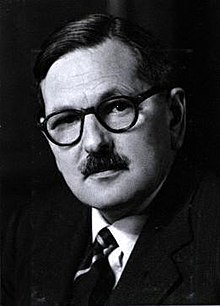Hugh B. Cott | |
|---|---|
 Hugh Bamford Cott, probably in 1945 when he became a fellow of Selwyn College.
Courtesy of Selwyn College, Cambridge | |
| Born | Hugh Bamford Cott 6 July 1900 Ashby Magna, Leicestershire, England |
| Died | 18 April 1987 (aged 86) Stoke Abbott, Dorset, England |
| Nationality | English |
| Alma mater | Selwyn College, Cambridge University of Glasgow |
| Known for | Camouflage, Countershading |
| Spouse | Joyce Radford |
| Children | 1 |
| Scientific career | |
| Fields | Zoology |
| Institutions | Selwyn College, Cambridge |
| Thesis | The Problem of Adaptive Coloration with Special Reference to the Anura (1938) |
| Doctoral advisor | John Graham Kerr |
Hugh Bamford Cott (6 July 1900 – 18 April 1987) was a British zoologist, an authority on both natural and military camouflage, and a scientific illustrator and photographer. Many of his field studies took place in Africa, where he was especially interested in the Nile crocodile, the evolution of pattern and colour in animals. During the Second World War, Cott worked as a camouflage expert for the British Army and helped to influence War Office policy on camouflage. His book Adaptive Coloration in Animals (1940), popular among serving soldiers, was the major textbook on camouflage in zoology of the twentieth century. After the war, he became a Fellow of Selwyn College, Cambridge. As a Fellow of the Zoological Society of London, he undertook expeditions to Africa and the Amazon to collect specimens, mainly reptiles and amphibians.